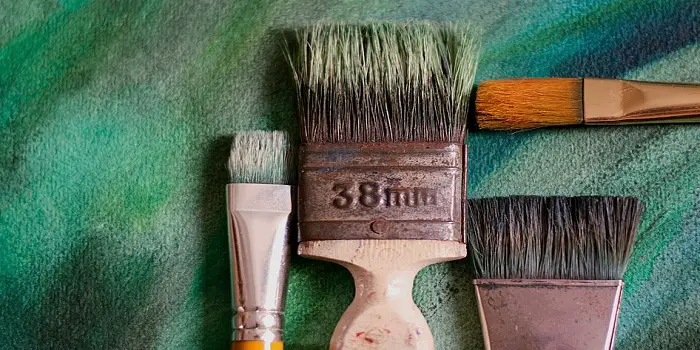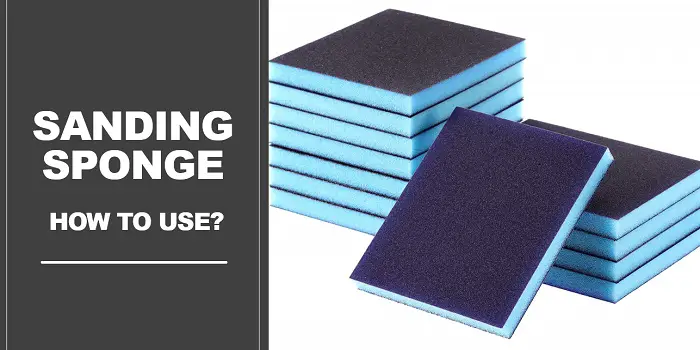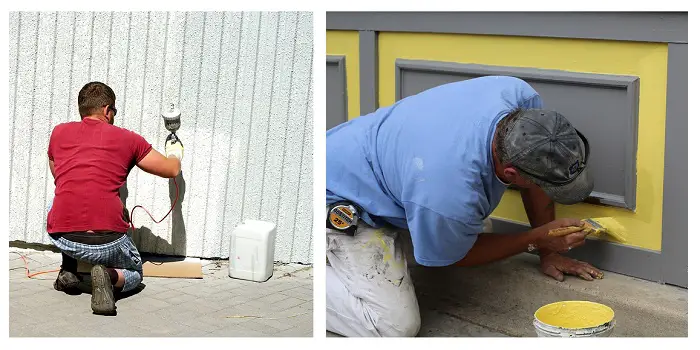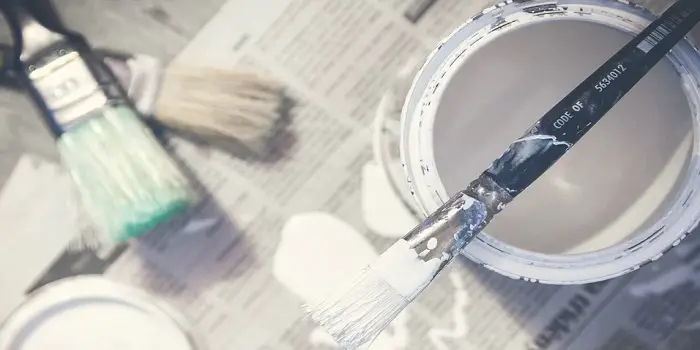
Washing the paintbrushes thoroughly is an important task you should never miss – after you are done with your paint project.
My visitors often ask me about the right cleaning process and whether they can clean their paint brushes fast in their sink.
In most cases, it will depend on the type of paint you have used for your project.
If you have used water-based latex paint, for example, and your house is on a public sewer system, you can clean the used paint brushes in the sink without any problem.
Use a bit of soap and hot water for washing, and you are good to go.
If the paint is dried and is hard to clean, you may gently use a scrubber or a brush comb on the bristles to get the paint off.
But remember, if you have an underground septic tank, you should not be washing the paintbrushes in your kitchen sink as they can clog and ruin your septic tank chamber.
Also, if you have used oil-based paints for your project, washing the brushes in your bathroom or kitchen sink isn’t recommended as you will then need solvents like paint thinner for cleaning.
And disposing of these solvents in a sink or a sewage system can be hazardous and even illegal based on certain state laws.
Below is a short video that shows how you can wash latex paint from the paintbrush in your sink very quickly. Check this out…
What's Here in the Article:
What will happen if Paint Goes Down the Drain?
Paint and paint solvents (like thinner and turpentine) are highly flammable.
Since these can release highly toxic fumes if disposed of incorrectly, they are considered to be a threat to your family if added to the plumbing system.
Oil paints or acrylic plastic paints, if disposed of in the sink, can also build up a coating inside the drain pipes which can then cause shrinkage and blocking in the drains.
Considering all these, it’s not safe to wash the paintbrushes, rollers, roller trays, buckets, or other paint accessories in your sink.
Also, you should never put these items in the dishwasher for cleaning purposes.
So, How do you Clean the Paint Brushes and Rollers Safely?
If you have used oil-based paints, varnishes, or acrylic plastic paints for your project, it’s good to wash the paint brushes or rollers in a bucket/tub of hot water.
Particularly if it’s an oil-based paint on the bristles, you will first need to rinse them with the thinner solvent (or turpentine) and then place the brush in a tub of hot water.
Make sure the water is not very hot as it can damage the bristles and roller cover.
Washing can be done in two ways, i.e., by using containers or in the sink.
When using a container, you will need at least two containers that are large enough to adjust the paint rollers in.
- Fill one container with dish soap and a warm water solution. And the other one with just warm water.
- Now hold the roller handle and put it in soapy water; rub off the paint using your hands.
- Keep rubbing till you see all the paint gone off from it.
- Now rinse the roller thoroughly in the second container.
When using a sink:
- Close the drain, fill it with warm water, and add soap.
- Now clean off the paint from the roller by rubbing it thoroughly.
- Once you are sure that the paint is removed, drain the water and refill the sink with warm water to rinse the paint roller.
- Repeat the process till the roller is completely clean!
How to dispose of paint brush cleaner liquid after washing?
After rinsing the brush thoroughly in hot water, leave the water tub filled with dirty paint water outdoors.
Depending on the climate, the water will evaporate within a few hours (or days) leaving down the paint solids on the bottom of the tub.
You can peel out this hardened paint residue using a knife. Then dispose of it safely in a trash bag, along with your other waste/paint brush cleaner.
After you have washed the brush, let it dry naturally, and then wrap it in a paper bag to store it safely for your next project.
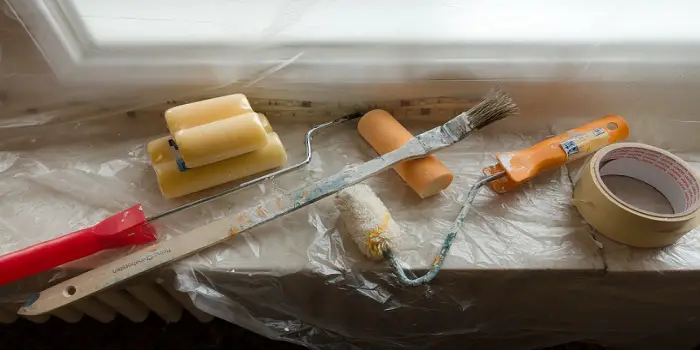
Other Eco-Friendly Alternative to Clean Paint Brushes
If you do not want to use chemical solvents like thinner, turpentine, or kerosene oil, there are household solvents that are Eco-friendly and safe to use.
These are Vinegar and Citrus solvents.
Both of these kitchen stuff can work great at cleaning your paint brushes.
1- Vinegar
Vinegar is one of the best alternatives to paint thinner you can use for cleaning paintbrushes.
To use vinegar for cleaning the paintbrush, start by heating a bowl filled with distilled white vinegar in the microwave for about one minute.
Then place the paint brushes into this hot vinegar and let them sit for about thirty minutes.
Finally, remove the brush from the vinegar and rinse one at a time to clean the paint that is still adhering to the bristles.
If required, you can purchase hand tools like Purdy’s Stain Steel Brush Cleaning Tool, which has one side for cleaning rollers and the other for cleaning brushes.
2- Citrus Solvent
The citrus solvent can be prepared in the kitchen or can be bought at the store.
It’s usually a mixture made of pure citrus peeling oil extract (98%) and water (2%).
You can use citrus solvent in the same way as with vinegar above.
The citrus solvent is environment-friendly and even safe for pregnant women when they need to clean the paintbrush after painting.
This also means you do not have to worry about disposing of it in the sink or down the drain.
3- Fabric Softener
Another good method to clean and soften the paint brushes is by using a scraper and fabric softener.
Just take the scraper and cautiously scrape off the residual paint you can see on the brushes.
Try to do it as much as possible; however, do not press very hard.
If you do, some of the bristles will just come out and can damage the brush.
2nd step is to Mix 4-5 tbsp of a fabric softener in a gallon of water in a bucket.
Stir the liquid till it gets mixed.
Now dip the paint brushes in the bucket and stir the bristles around it for at least 10-15 seconds.
If the brush isn’t soft, then do this procedure again for 10-15 seconds.
Finally, rinse the brush with warm water and allow it to dry.
4- Baby Oil
I know it’s hard to believe, but using baby oil for cleaning paint brushes is a remarkably effective alternative, especially when you do not want to use toxic solvents.
For cleaning and softening the paintbrush using baby oil, you will need to put some oil on the bristles of a dirty brush.
Make sure to spread the oil or lotion thoroughly into the hairs which will help with pushing the paint out.
After cleaning the paint using baby oil, you should finally rinse the brush using soap and fresh water.
And then let it dry naturally for a few hours.
After a few hours, all you will get is a cleaned and softened paintbrush.
Baby oil comes with vitamins that prove to be nourishing for your skin after you have done painting for a long hectic day.
Plus, it also acts as a natural antiseptic that helps keep the germs on the paintbrushes away.
Simply because it’s safe for the skin, you can use it in your home without any danger to your children or pets.
Bonus Tip:
If you do not prefer using baby oil, you can make use of linseed oil (or flaxseed oil) for cleaning paint off your paint brushes, dried rollers, and roller trays.
Also, consider using a fabric softener or a conditioner to condition your paintbrush, particularly if the brushes have dried and hardened.
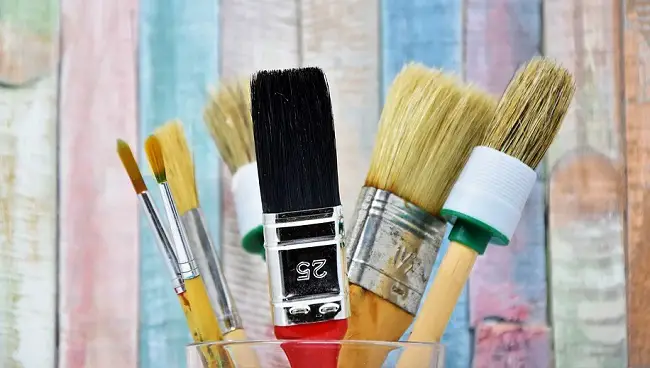
Can You Reuse Paint Rollers and Brushes?
Fortunately Yes.
There are brushes, paint rollers, and covers that you can use for several jobs without compromising the quality of your project.
A good quality paint roller can be used up to 5 times before ending up in the bin.
- You will just need to scrape the roller once you have used it.
- While making sure it’s still wet, get an airtight wrap and cover it.
- Then store the covered roller in a fridge to keep it fresh for the time being.
While these steps seem to be pretty easy to store the roller cover for a few days, there’s much more you need to know, especially if you want to keep them for more than a couple of days.
The cleaning process, for example, will depend on the type of roller (nap or foam), different paints you have used, and the cleaning products you intend to use.
Latex paints (like vinyl styrene paint or water-based acrylics), for example, can stick to the nap rollers rigidly after use.
When trying to remove them completely, they can be a real pain.
Do You Need to Clean Your Paint Brush After Every Use?
No, not necessarily all the time!
Especially if you are stopping the paint for a while or want to return to it the very next day, you can keep the brush uncleaned without worrying about any damages.
When wrapped in a plastic bag, the paintbrush can be kept aside for up to a day.
If you want to return after 2-3 days (or even longer), you can wrap the brush in plastic and keep it in the freezer.
This way, you can keep the paintbrush pliable for up to 10- 15 days (or about two weeks).
Also, remember that you should not leave your paint brushes in water or thinner solution for long.
If you keep your bristle brushes soaked overnight, it may cause them to shed fast.
Final Thoughts
Washing the paint brushes and rollers in the kitchen sink isn’t safe for your home and environment.
Especially if you are using solvents and paints that are toxic.
Instead, you can try other Eco-friendly ways (that I mentioned above) so that you can keep your family as well as the environment safe.
The best thing about these paintbrush cleaners and conditioners is it helps to clean oil paint off your paintbrushes without using any solvent, turpentine, or paint thinner.
Share the post "Should You Clean Paint Brushes in Your Kitchen Sink?"

Douglas Becker (aka Painter Doug) has over twenty years of experience as a painter in Adkins, Texas. At present, he resides in Florida with his family.
From painting multi-storeyed houses, condos, and apartments to large commercial buildings and small offices, he had served various customers in areas not only in Adkins but also in Southwest Florida, Sarasota, Naples, and many more. To know more about him check here.

